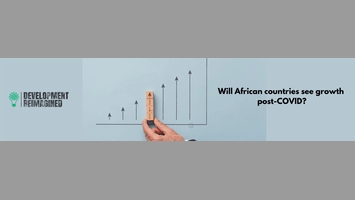The latest IMF World Economic Outlook (WEO) was released in October 2023, during the IMF and World Bank’s Annual Meetings – which were held on the African continent in Marrakesh for the first time in 50 years. The WEO underscored that the global economy continues on a protracted recovery from the disruptive effects of the last four years, describing it as “limping along, but not sprinting.”
But was this really the case for African countries? Are African countries experiencing the same challenges as the rest of the world, or faring better or worse?
To answer these questions we dug through the IMF’s WEO data and found four main takeaways:
- Growth forecasts for Africa remain ahead of the global average, for a third consecutive year since 2021. The IMF projects the global economy to grow at 3.0% and 2.9% in 2023 and 2024, respectively. Meanwhile, Africa is projected to grow at 3.3% in 2023 and 4.0% in 2024.
- African countries remain amongst the fastest growing economies in the world, with six countries from Africa making the IMF’s list of the ten fastest growing economies in the world in 2023 and 2024.
- African countries remain resilient, but the continent is not yet out of the woods. The IMF projects Africa’s growth rate in 2023 to decline from 4% in 2022 to 3.3% before rebounding to 4% in 2024. These rates remain below the historical average of 4.8% as well as the pre-pandemic projections. Inflation remains in double digits in 14 African countries; interest rates remain high globally, limiting credit access; and many countries continue to experience climate-related disasters.
- Even with a projected growth rate higher than the global average, African countries dominate the World Bank/IMF’s list of countries at risk of debt distress. Notably, five of the six African countries on the IMF’s list of fastest growing economies in the world are tagged as having either a moderate or high risk of debt distress. Failing to account for the significant growth potential of African countries, the World Bank/IMF’s Debt Sustainability Analysis (DSA) framework continues to produce unfavourable debt assessments which can undermine Africa’s development aspirations by limiting access to much needed development finance.
It is clear from the IMF’s WEO then, that African countries require special and targeted consideration going forwards.
So, what is needed to make the global economy, and the international financial system (that the IMF and World Bank is a key part of) work better to meet African needs?
We have three suggestions.
Borrower coordination is essential for good deals: During the Annual meetings, there was another Global Sovereign Debt Roundtable held, which included three African countries – Ethiopia, Ghana, and Zambia. Whilst the GSDR is a step forward, the borrowing countries, especially from Africa, remain underrepresented, whilst creditors still dominate the discussions. Zambia finally managed to get a debt restructuring deal after many years. Meanwhile, Ghana and Ethiopia, the two other African participants in the GSDR, are yet to reach a deal with the Official Creditor’s Committee. As a result, this system should be reformed and African countries also coordinate on their response to the creditor-driven debt challenges. A “Borrower’s Club,” as we have proposed, would amplify borrowers’ voices in debt system reforms and aid in creating a more equitable credit rating approach, as recommended by the APRM.
African countries should explore alternative sources of funding to meet the continent’s significant finance needs. Egypt recently issued Africa’s first Panda bond in the China capital market. Other African countries could look to capital markets in China, and other emerging economies for sources of financing as concessional capital remains scarce.
African countries should prioritise growth – not austerity and spending cuts. With the effects of global economic shocks likely to persist into the medium term, and drag down growth rates in the region, African countries need to find new sources of growth. Value-addition and economic diversification through the development of new industries such as the pathogen economy are possible ways for African countries to keep growth on track.
Our infographic below explains all these findings. Have a look through!

To find out how Development Reimagined can support you, your organisation or Government to review key economic response policies to the COVID-19 crisis, the Russia/Ukraine war, and other shocks, please email the team at clients@developmentreimagined.com.
Special thanks go to Rugare Mukanganga, Meghna Goyal, Trevor Lwere, and Jade Scarfe for their work on the graphics, collecting/analysing the underlying data, and sharing this accompanying article.
The data was collated from a range of sources including government websites and media reports, IMF and World Bank data. Our methodology is entirely in-house, based on analysis of economic growth, inflation, and other trends.
October 2023


